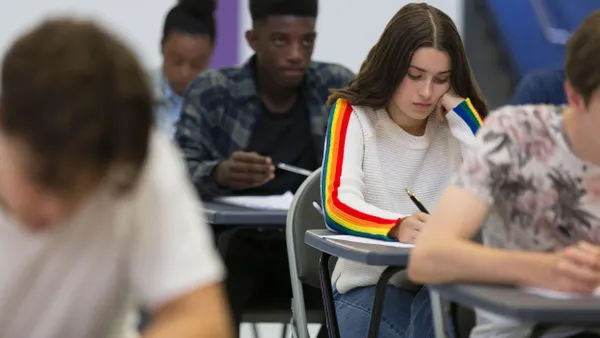Dive Brief:
- The emphasis on STEM education (science, technology, engineering and mathematics) often focuses on the need to fill the three million jobs created in STEM fields — just in 2018. But traditional STEM curriculum is also expanding to include arts courses, and in process creating “a new framework,” wrote eSchoolNews.
- STEAM curriculum encourages children to tap into problem-solving tools, and approach their work with a creative eye, particularly in the elementary school setting. STEAM lessons lean more toward hands-on learning, so students spend less time in lecture-styled settings and more on their own and working with classmates.
- STEAM education can result in students who feel more confident, as they experiment — and even fail — but ultimately learn how to solve the assigned tasks.
Dive Insight:
While some may view STEM as exacting subjects, these fields also rely on creativity to push the boundaries, develop innovative products and make new discoveries. Without experimentation, and abstract and creativity thinking — all skills inherent in an arts education — astronauts wouldn't be orbiting the earth, scientists wouldn't have discovered uranium and inventors wouldn't be testing out cars that can drive themselves.
Bringing more creative approaches into science subjects is deemed so crucial, some teacher education programs are developing courses that will better prepare teachers to encourage these skills in their future or current classrooms. The University of Southern Maine, for example, has a course entitled “Creative Thinking Into STEM Education," which helps educators be better equipped to weave creative thinking into STEM courses.
STEAM approaches can help make STEM courses even seem more palatable, and approachable, for students who think they aren't skilled at science, notes the National AfterSchool Association. After all, the challenge for curriculum designers is not only to help students meet standards, but to also make subjects accessible and engaging for students so they can develop the tools and knowledge they need to one day find, and perhaps shape, a place for themselves in the world at large.











